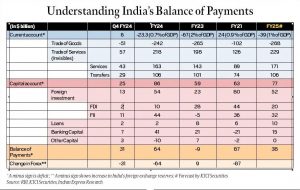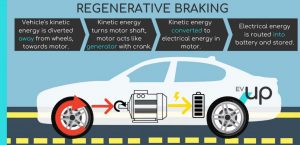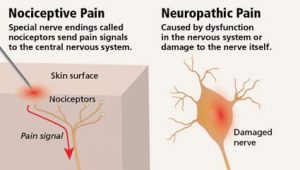| PYQ Relevance:
Mains:
Q) Climate change’ is a global problem. How India will be affected by climate change? How Himalayan and coastal states of India will be affected by climate change? (UPSC CSE 2017)
Q) ‘Clean energy is the order of the day.’ Describe briefly India’s changing policy towards climate change in various international fora in the context of geopolitics. (UPSC CSE 2022) |
Note4Students:
Prelims: Supreme court judgements related to climate change impact,
Mains: Role of state and local Government to address the impact of climate change,
Mentor comment: Climate change poses grave threats to human rights, including the rights to life, health, food, water, housing, and an adequate standard of living. Extreme weather events, sea-level rise, and environmental degradation disproportionately impact vulnerable populations. Governments have a legal obligation to curb climate change, and corporations must respect human rights by reducing emissions and adapting to climate impacts. Addressing climate change is crucial to upholding human rights and ensuring a sustainable future for all.
Let’s learn!
__ __
Why in the news?
In a landmark judgment, the Supreme Court of India recently recognized a right to be “free from the adverse impacts of climate change” in “M.K. Ranjitsinh and Others vs Union of India”, deriving it from the right to life and the right to equality.
Law to inform development choices
- Integrating Climate Objectives into Development: Ensure that low-carbon and climate-resilient futures are prioritized in routine decision-making at all levels of development. Embed climate objectives in the legal framework to guide sustainable development choices.
- Grounding Climate Action in Social Justice: Design laws to protect vulnerable populations disproportionately affected by climate change. Ensure the energy transition is just and equitable, advancing social justice and inclusive development.
- Adopting a Comprehensive and Flexible Approach: Move beyond top-down emission targets to address broader developmental choices and their long-term impacts. Establish well-defined legal procedures that promote continuous consideration of low-carbon and climate-resilient futures.
- Building a Robust Institutional Framework: Create an institutional structure to strategize, prioritize, troubleshoot, and evaluate climate policies. Enhance governance capacity to ensure credible and accountable climate action across all levels of government.
- Tailoring Framework Climate Laws to the Indian Context: Adapt elements of global framework climate laws to suit India’s specific needs, focusing on maximising development per unit of carbon emitted. Emphasize climate resilience and social equity, ensuring development progresses in a low-carbon direction while building resilience to pervasive climate impacts.
Need for a Low-Carbon Development Body
- Rigorous Policy Analysis and Knowledge Generation: Establish a knowledge body in government to rigorously analyze policy options and their potential futures. Enable informed decision-making through a comprehensive understanding of low-carbon development and resilience strategies.
- Expertise and Technical Guidance: Create an independent ‘low-carbon development commission’ staffed with experts and technical personnel. Provide national and state governments with practical guidance on achieving low-carbon growth and resilience.
- Deliberative Decision-Making and Stakeholder Consultation: Facilitate a platform for deliberative decision-making involving multiple stakeholders. Systematically consult vulnerable communities and those adversely affected by technological changes to ensure their concerns are heard and integrated, leading to more sustainable and inclusive policy outcomes.
- Strategic Direction and Whole-of-Government Coordination: Form a high-level strategic body, or ‘climate cabinet,’ comprising key Ministers and representation from State Chief Ministers to drive climate strategy across government. Address the challenge of siloed decision-making by promoting a whole-of-government approach with dedicated coordination mechanisms.
- Enhanced Governance and Legal Empowerment: Complement the role of the Ministry of Environment, Forest, and Climate Change with higher-level coordination bodies. Reinforce existing structures like the Executive Committee on Climate Change with clearly defined legal powers and duties to ensure effective implementation and accountability in climate governance.
Role of State and Local Governments in Climate Law
- Engagement with Federal Structure: Recognize the importance of India’s federal structure in climate governance. Acknowledge that crucial areas for emission reduction and resilience improvement, such as electricity, agriculture, water, health, and soil, are managed by State and local governments.
- First Responders to Climate Impacts: Understand that climate impacts are felt first and most intensely at local levels. Ensure that any institutional structure or regulatory instrument engages meaningfully with subnational governments.
- Access to National Scientific Capacity: Establish channels for subnational governments to access national scientific resources and expertise. Utilize the low-carbon development commission as an intermediary to enhance local climate scientific capacity.
- Financing Local Action: Develop mechanisms for financing local climate actions. Align centrally-sponsored schemes with climate goals and require national departments to climate-tag expenditures to enhance local climate resilience.
- Coordination Mechanisms and Unified Goals: Create coordination mechanisms for the Centre and States to consult on major climate decisions. Require periodic updates of medium-term climate plans from both Centre and States, built around unified climate goals.
- State-Specific Solutions and Institutions: Enable States to develop complementary institutions to those at the Centre, providing local knowledge, strategy-setting, deliberation, and coordination functions. Foster the development of State-specific solutions that address unique local climate challenges.
Steps taken by Government to address the impact of climate change:
- International Solar Alliance (ISA): Launched in 2015, this alliance aims to efficiently utilize solar energy and reduce dependence on non-renewable sources like fossil fuels.
- One Sun, One World, One Grid (OSOWOG) project with the UK: This project aims to build and scale inter-regional energy grids to share solar energy globally.
- Swachh Bharat Mission: This program emphasized cleaning India’s cities and villages by providing toilets for every household.
- National Clean Air Programme: Launched in 2019 to reduce particulate matter concentrations in the atmosphere.
- Green Skill Development Programme: Launched to develop green skills and provide employment in the environment and forest sectors.
- Commitment to get 50% of energy from renewable sources and reduce total projected carbon emissions by 1 billion tonnes by 2030: The government aims to ensure sustainable development of the environment.
- Faster Adoption and Manufacturing of Hybrid & Electric Vehicles (FAME) India scheme: Launched in 2015 to promote electric vehicles and decrease coal consumption.
|
Way forward:
- Strengthen Institutional and Legal Frameworks: Establish robust institutions like an independent low-carbon development commission to provide expert guidance, facilitate stakeholder consultations, and ensure informed decision-making.
- Promote Inclusive and Equitable Climate Action: Integrate social equity considerations into climate policies by systematically consulting vulnerable communities and those affected by technological changes.






